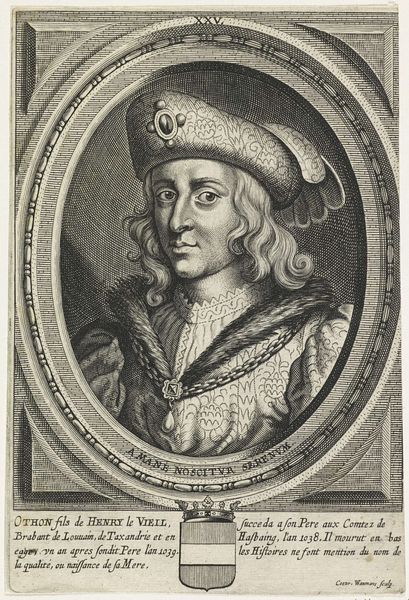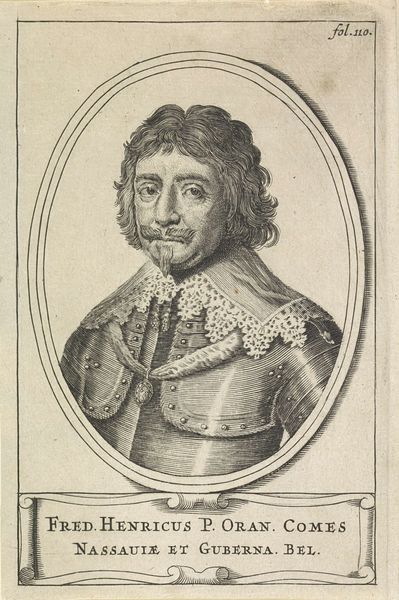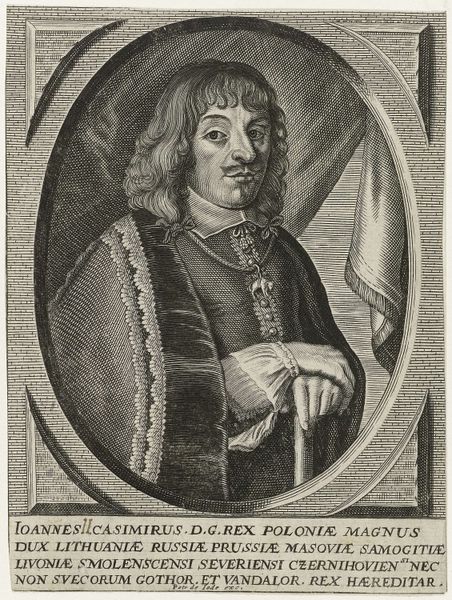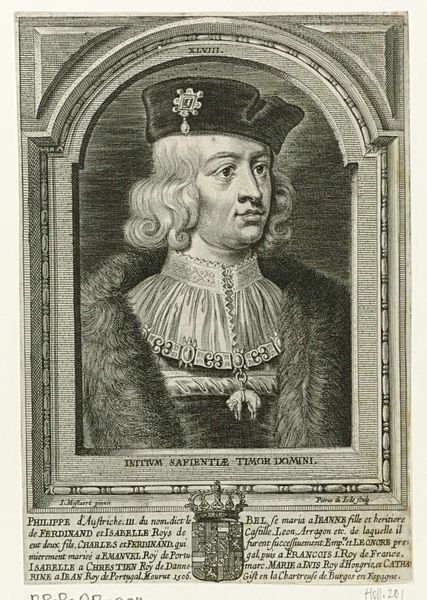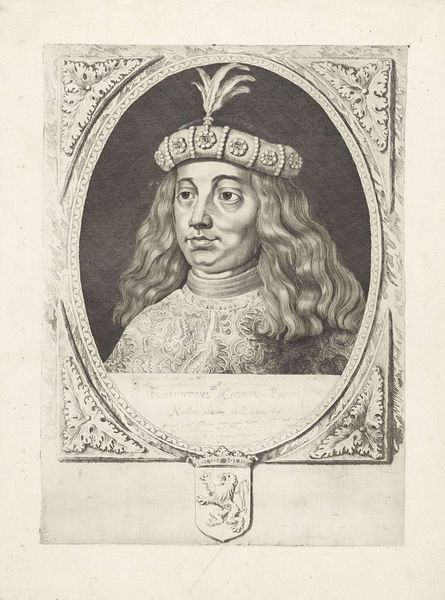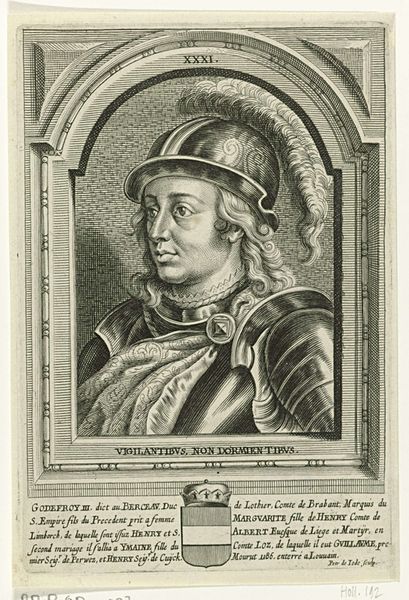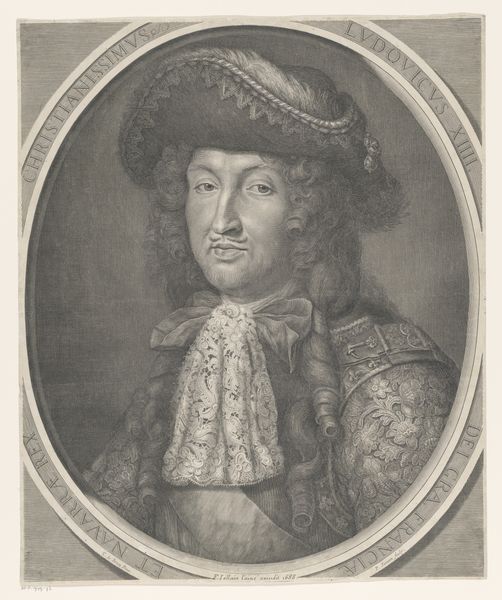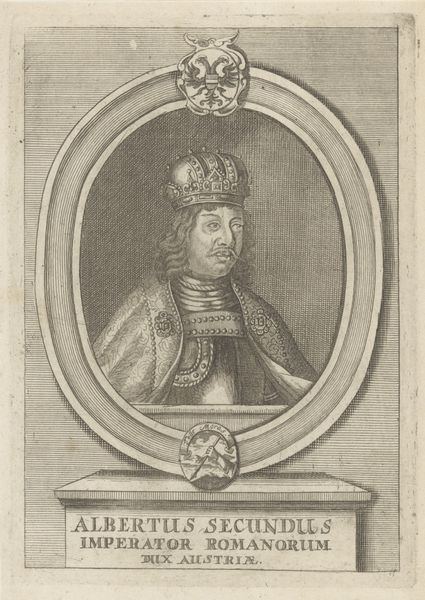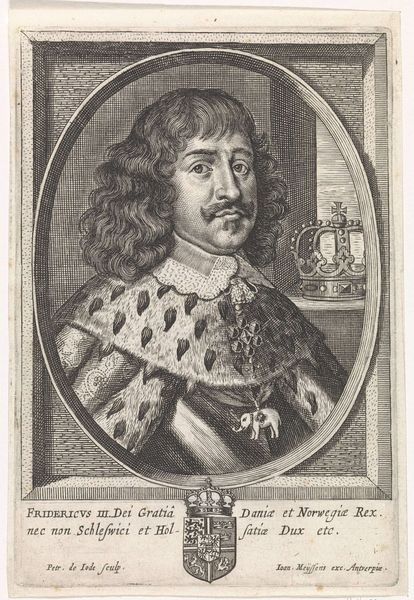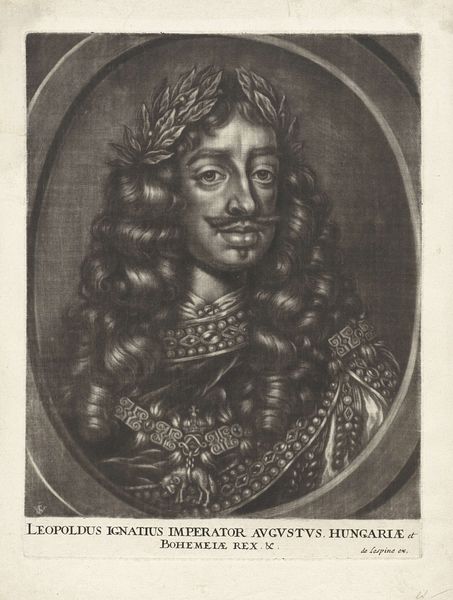
drawing, print, etching, engraving
#
portrait
#
drawing
#
baroque
# print
#
etching
#
engraving
Dimensions: height 173 mm, width 119 mm
Copyright: Rijks Museum: Open Domain
Editor: Here we have Pieter de Bailliu’s "Portret van graaf Philip I," created sometime between 1623 and 1661. It’s a print combining etching and engraving. The detail is striking; you really get a sense of the Count's... seriousness. How do you interpret this work, looking at it from your perspective? Curator: This portrait offers a glimpse into the visual language used to construct and reinforce power and identity in the Baroque era. Note the luxurious details of his attire – the fur hat, the jeweled accents, the elaborate chain. These aren't simply aesthetic choices. What do they communicate about the subject's status and role within society? Editor: Well, wealth, certainly. The clothes signal importance, but it also feels like the artist wanted to communicate the Count's individuality. Curator: Exactly. Consider how portraits like this operated within the broader socio-political context. They were tools for establishing lineage, solidifying alliances, and projecting an image of authority. What social codes are at play here and whose stories might be missing from this picture? We also need to be asking: Who was this portrait meant to reach? What did this artwork represent to those individuals? Editor: I hadn't considered how controlled the image is, almost like propaganda. Now I'm wondering who was excluded by that control. Curator: Precisely. It's crucial to examine the historical context and to critically assess whose perspectives are privileged and whose are marginalized in these visual representations of power. It helps us engage more thoughtfully with art, but also with history itself. Editor: Thanks, that gives me a whole new perspective to take into consideration. I really appreciate you broadening my views regarding power.
Comments
No comments
Be the first to comment and join the conversation on the ultimate creative platform.
